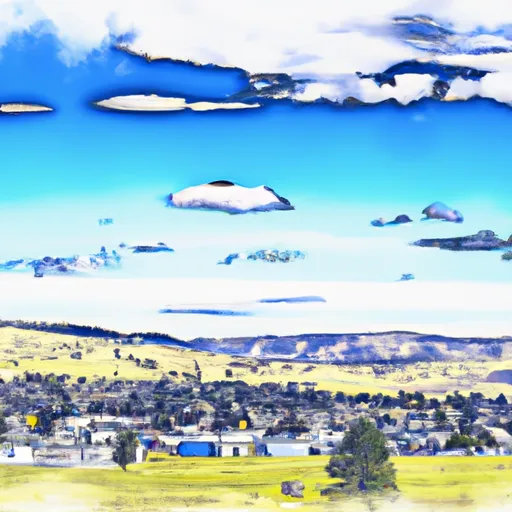-
 Snoflo Premium
Snoflo Premium
Get unlimited access to all our content
With no Ad interruptions! - Start Your Free Trial Login with existing account
Whitetail
Eden Index
Climate
6.1
•
Recreation
•
Community
•
Safeguard
2.4/10

Whitetail, Montana, is a picturesque town nestled in the heart of the Rocky Mountains. Known for its stunning natural beauty, the region offers a diverse range of outdoor recreation opportunities. The climate in Whitetail is characterized by cold winters and mild summers. With an average annual temperature of around 45°F (7°C), visitors can expect snowy winters perfect for skiing and snowboarding, while summers provide pleasant temperatures for hiking, fishing, and camping.
The hydrology constituents of Whitetail are abundant, with numerous rivers, lakes, and streams dotting the landscape. The town is surrounded by pristine bodies of water, including Whitetail Lake and Crystal River, offering opportunities for fishing, boating, and swimming. The region's water sources are known for their crystal-clear quality, making them ideal for various water-based activities.
Outdoor enthusiasts will find themselves spoiled for choice in Whitetail. The area boasts extensive hiking trails, allowing visitors to explore the breathtaking mountain vistas and observe wildlife in its natural habitat. Additionally, Whitetail is a haven for skiing and snowboarding enthusiasts, with world-class slopes and resorts nearby.
In summary, Whitetail, Montana, offers a captivating blend of breathtaking scenery, diverse hydrology constituents, and a wide range of outdoor activities. Whether visitors seek tranquility amidst nature or thrilling adventure, this charming town has something for everyone.
What is the Eden Index?
The Snoflo Eden Index serves as a comprehensive rating system for regions, evaluating their desirability through a holistic assessment of climate health, outdoor recreation opportunities, and natural disaster risk, acknowledging the profound impact of these factors on livability and well-being.
Climate Health Indicator (CHI): 6.1
Whitetail receives approximately
342mm of rain per year,
with humidity levels near 69%
and air temperatures averaging around
5°C.
Whitetail has a plant hardyness factor of
3, meaning
plants and agriculture in this region thrive during a short period during spring and early summer. Most
plants will die off during the colder winter months.
By considering the ideal temperature range, reliable water supplies, clean air, and stable seasonal rain or snowpacks, the Climate Health Indicator (CHI) underscores the significance of a healthy climate as the foundation for quality living.
A healthy climate is paramount for ensuring a high quality of life and livability in a region, fostering both physical well-being and environmental harmony. This can be characterized by ideal temperatures, reliable access to water supplies, clean air, and consistent seasonal rain or snowpacks.
Weather Forecast
Streamflow Conditions
Missouri-Poplar
Area Rivers
Missouri-Poplar
Snowpack Depths
Missouri-Poplar
Reservoir Storage Capacity
Missouri-Poplar
Groundwater Levels
Recreational Opportunity Index (ROI):
The Recreational Opportunity Index (ROI) recognizes the value of outdoor recreational options, such as parks, hiking trails, camping sites, and fishing spots, while acknowledging that climate plays a pivotal role in ensuring the comfort and consistency of these experiences.
Access to outdoor recreational opportunities, encompassing activities such as parks, hiking, camping, and fishing, is crucial for overall well-being, and the climate plays a pivotal role in enabling and enhancing these experiences, ensuring that individuals can engage in nature-based activities comfortably and consistently.
Catastrophe Safeguard Index (CSI):
The Catastrophe Safeguard Index (CSI) recognizes that natural disaster risk, encompassing floods, fires, hurricanes, and tornadoes, can drastically affect safety and the overall appeal of an area.
The level of natural disaster risk in a region significantly affects safety and the overall livability, with climate change amplifying these risks by potentially increasing the frequency and intensity of events like floods, fires, hurricanes, and tornadoes, thereby posing substantial challenges to community resilience and well-being.
Community Resilience Indicator (CRI):
The Community Resilience Indicator (CRI) recognizes that education, healthcare, and socioeconomics are crucial to the well-being of a region. The CRI acknowledges the profound impact of these elements on residents' overall quality of life. By evaluating educational resources, healthcare accessibility, and economic inclusivity, the index captures the essential aspects that contribute to a thriving community, fostering resident satisfaction, equity, and social cohesion.

